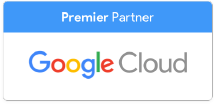Nearly every month, there’s a major digital services outage of some kind, and they can significantly impact business continuity. Recently, an AWS outage affected most major software solutions and applications with a Microsoft Azure outage only a few days after.
This is a common theme. Everything business-critical seems to go down periodically except for Google, and if Google does experience a rare outage, it’s only for a short period of time. It isn’t often that Google aggressively goes after Microsoft as a competitor, but over the past couple of years they’ve seen enterprise-level businesses jump ship specifically due to outage and security concerns.
In response, they’ve released two new Google Workspace plans designed specifically to either act as a backup for Microsoft customers experiencing outages or to assist clients in making the switch from Microsoft to Google. The second thing was always an option, but the new plan offers a clear offboarding/onboarding process that charts a clear course for companies considering the change.
Plan One: Business Continuity
This plan is meant for businesses who want to, for the most part, stick with Microsoft but want to be able to rely on Google Workspace in the event of a Microsoft outage. It also comes with advanced zero-trust, compliance and digital sovereignty controls.
There are two tiers of this plan: Business Continuity and Business Continuity Plus, with Plus giving you access to synchronized data. For a true backup, it’s wise to choose Business Continuity Plus
Plan Two: Work Transformation Set
This plan is meant to completely offboard your business from Microsoft and onboard you to Google Workspace with advanced security, and backup features in partnership with trusted vendors. This plan offers two options.
Option One:
This option merges Workspace with Okta and Omnissa to “help organizations with the most demanding requirements and stringent compliance standards, such as FedRAMP High.”
Option Two:
This option uses JumpCloud to provide a streamlined and unified identity, device, and access management platform.
You can choose one or both options depending on business requirements. If your business doesn’t have strict compliance standards, the option with JumpCLoud may be all you need.
You may also not even require the Work Transformation Set if all you want to do is switch to Google Workspace from Microsoft Office 365 as a small to medium-sized business. UpCurve Cloud can help you make the switch with or without this plan.
What is Causing Persistent Outages?
There are numerous things that cause outages of mission-critical digital systems. From hackers to resource drains due to AI use, there are a million reasons a solution can fail and it isn’t always the fault of the company. Cybersecurity issues are just one factor; human error, faulty updates, and physical equipment failures are all potential fail points.
Pulling back and looking at it from a wide view, the internet is an aging digital organism that constantly needs to do more. There may have been significant advances in its architecture and operations, but much of it still operates in the same way - and with the same mechanisms - that it did when it was first established for widespread use. Think of it as an old bridge; it may have been fine for 200 vehicles a day back when that bridge was first constructed, but now it’s expected to carry 2000 vehicles a day. Instead of rebuilding the bridge, we’ve added additional supports and reinforcements, but it’s still the same bridge.
The recent AWS failure, for example, was caused by a DNS outage. The Domain Name System (DNS) is a digital directory of the internet which has been used since its inception, and there is no good replacement for it. It has evolved from a completely insecure and exploitable system to a robust, secure system that we all rely on every day whether we know it or not. It’s the original bridge structure, and the enhancements we’ve added have not been enough to prevent failures.
How is Google Able to Provide Uptime Assurances That Others Cannot?
Using its significant resources, Google has built better infrastructure for all of its digital solutions than other companies have.
To partially answer the question of how it prevents major failures, we’ll point you to this article we wrote about the 2024 Crowdstrike outage. Additionally, Google had one significant outage and completely retooled its security posture after that incident. Microsoft, on the other hand, has historically had less security-first thinking embedded in its culture than Google did. It obviously has a robust security infrastructure in place, but things like third-party integrations should not have the capacity to cause a solution-wide failure as it did with the Crowdstrike outage.
But that just covers cybersecurity. Google also has a critical balance in place between feature rollout and reliability to protect uptime and product integrity. If a product is within its “error budget”, new features can be added. If it isn’t, no new features can be added until reliability is improved. Given the ever-present push to add new features from product managers, shareholders, and senior executives, this balance acts as a dam to keep Google’s flagship solutions and features running smoothly.
How Do I Get These New Plans?
On the blog announcing the rollout, Google recommends getting in touch. You can also get in touch with us and we can manage the whole process as a Google Premier Partner. We’ve managed thousands of Microsoft migrations for small to enterprise-sized businesses and government organizations. There’s no pricing advertised for either plan, and that’s because each depends on the security and backup needs of your organization.
While Google is great, having a Partner at your side gives you a concierge and on-call support for your migration. Contact us today to get started.
Contact Us to Learn More about Transforming Your Business
